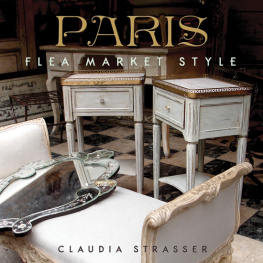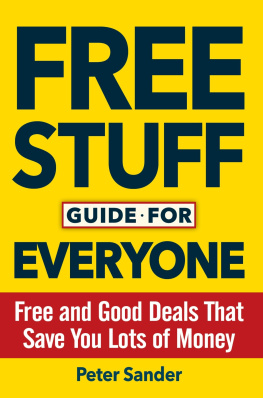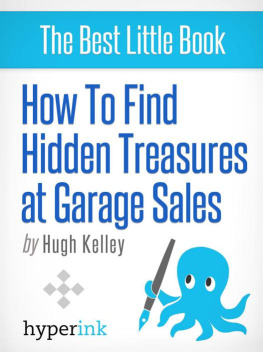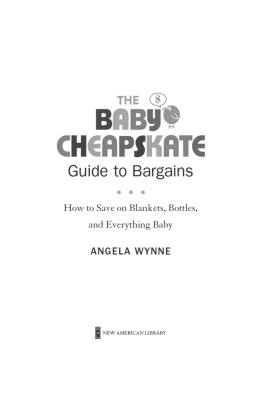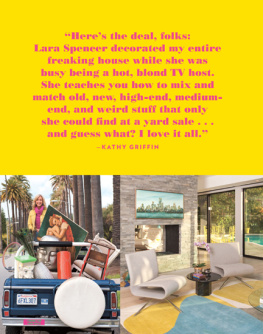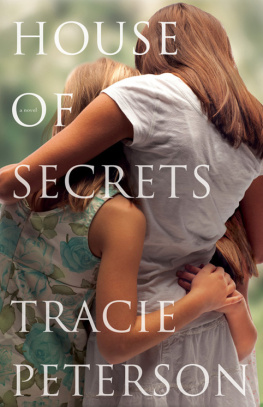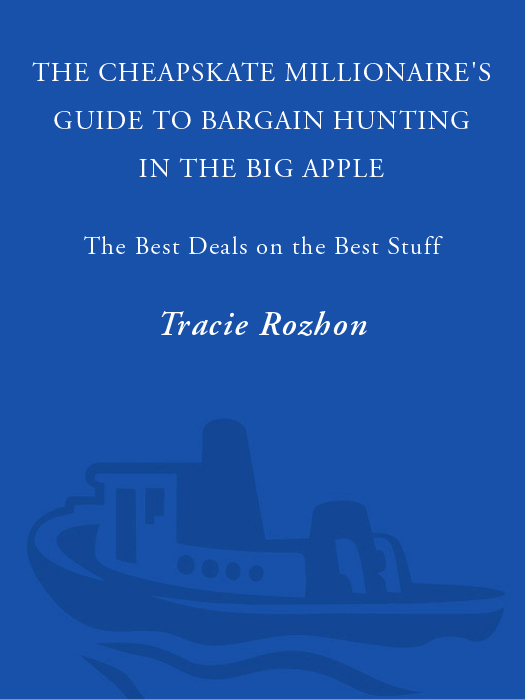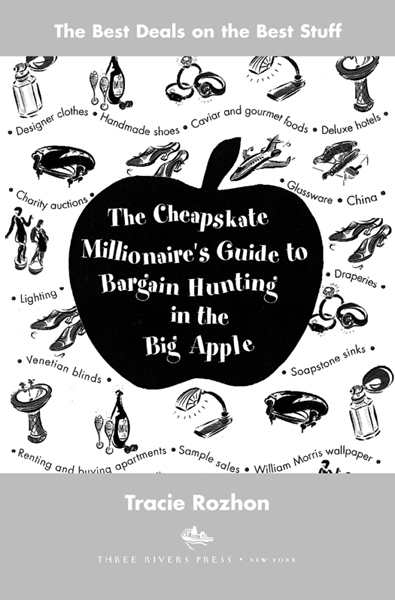Who fixed my computer, made my telephone calls, crashed up my car doing errands for meand brought me red-and-white striped tulips when the deadlines seemed unbearable.

Contents
Cheap clothes (and shoes) that look like a million: Inside Manhattan; the discount outlets like Daffys, Loehmanns, T. J. Maxx. How to shop them; what to look for; the rules. Shopping on Orchard Street. The fancy shops. The sales: When and where. The sample sales. Why having your boots and shoes made can be better and cheaper; where to get them made. Outer boroughs, Connecticut, New Jersey, and the rest of New England. How to get there. (Dont even think of a bus ) List of sources.
Bargaining for sapphire rings and diamond ear studs. Advice on emeralds and rubies and pearls. What you need for your search: a 10X jewelers loupe. The diamond buyers chart. A wholesale dealer gives up her secrets. Enhancements and why theyre not always a good thing. (Watch out for steam cleaners.) List of sources.
Where to get caviar, smoked salmon to serve as appetizers. Blood and butchery on Ninth Avenue. Cheese in the East Village. Ordering wine by the caseor by the under-$10 bottle. Cheap wine that tastes like double the priceand wines to stay away from. List of sources.
Chapter 4 On the Town:
Stepping Out to the Bars and Clubs
Hanging out for $10 at the Carlyle. A platter of salsa and plantains in Gramercy Park for $5. The (velvet) rope trick. When is a $12.50 martini worth it? Swinging at Birdland. List of sources.
Chapter 5 Where Are the Chocolates on My Pillow?
Fancy Hotels with Deals
During the week. On the weekends. Small boutique hotels and deals under $100. Talking with Bernard Goldberg, the man who invented the Cheap Hotel that Looks like a Million. Plan A: How to make reservations like a millionaire (how to get the best roomwith no fibbing). Plan B: How to change rooms like a millionaire (for use only after Plan A has failed). List of sources.
An insiders glossary for reading between the lines. To rent: Reading the Village Voice. Surfing the Net. Playing the odds. Surfing the streets: Checking out the signs, greasing the palms of the doormen and supers. To buy: The real secrets in a hot market. Dead listings. The advantages of using one broker vs. many. The advantages of using no broker: Going direct. The disadvantages. Bargaining like a millionaire. List of sources.
Furniture: Discount outlets and designers warehouses. Antique shops. The 26th Street antiques market. The pier shows. Going to the Armory (The Winter Antiques Show) not to buy. Auctions in New York City and its environs. The best auctions in Connecticut and New York State. Brimfield, Massachusetts, and Renningers Extravaganza in Pennsylvania. What to look for; how much to pay. List of sources.
Silk taffeta from the Orienton 39th Street. Finding Brunschwig et Fils in Westerley, Rhode Island. Wallpaper for $2.99 a roll. William Morris from England. Blinds from South Carolina at half the price of the citys discount stores. List of sources.
Chapter 9 Having Them Made:
Curtains, Upholstery, Cabinets
Draperies. Upholstery. Raw materials: Paint and lumber. How to light everything. How to hire craftsmen. List of sources.
Kitchens and baths. Shopping the Bowery. Having a sink custom-made and other adventures. Ordering your brass hinges from England. Vintage plumbing fixtures: Pros and cons. Picking up your granite countertops in Long Island City (and saving thousands of dollars) and buying your soapstone sink in Vermont. Buying pedestal sinks at Home Depot ($99 vs. $429). What you should buy cheaply and what you absolutely cant. List of sources.
Chapter 11 You Knew You Wanted It
But You Didnt Know You Could Afford It
All the luxuries to make your life complete: From engraved stationery to pedigreed puppies to vintage Rolls-Royces to a bargain hair coloring at one of the citys premiere salons.
Where to go when youve bought it all? How about London? Cheap travel. Using the telephone, the Net, or the Courier services. The best deals. (Youll be amazed.) A short list of places to stay in London. Buying West End theater tickets. List of sources.
How to show it off: A blend of modesty and self-satisfaction. Should you spread the word or just keep quiet? Your next project.

Introduction
S o you dont have a million dollars. Join the crowd. But you dont want to be like the crowd; you want to live, dress, eat, and, well, exist like a millionaire. Or maybe you actually are a millionaire, but youre a cheapskate. It doesnt matter which you are. As long as you have style, this book is for you.
There are plenty of books about bargains in New York City. The problem with them, as I found out a while back, is that most of them give only the cheap stuffnot the cheap good stuff. So one guide might have an extensive listing of cheesy boutiques on 14th Street, plus a variety of discount stores and by-the-hour flophouses. But what millionaire would be caught shopping there? Or staying there? And yes, the book might tell you that at a particular store, you can find a mans sport jacket by a famous designer, but the book doesnt tell you that (a) its purple-and-orange plaid or (b) its only in size 38 Short or (c) its the same price as it would be at a fancy store on sale.
The Cheapskate Millionaires Guide to Bargain Hunting in the Big Apple will tell you how to live like a millionairewithout paying the price. This book will tell you where to find the best designers clothes at 40 to 75 percent off. It will show you where to find stunning wall sconces for $49about one-sixth of their retail price. It will tell you where to find fabrics for $5 a yardfabrics that look like $100 a yard. It will tell you where to find spices for 50 cents a bagful. It will tell you where to find a gorgeous sapphire ring surrounded by diamondsfor about one-fifth the price of the same ring in a posh Fifth Avenue emporium.
But more than that, this book will show you strategies: how to negotiate with the leather merchants on Orchard Streetand with the antiques dealers at a 26th Street open-air booth! How to get a busy real estate agent to call you back. And how you can save hundreds of dollars on airfares, engraved stationery, and custom-made cabinets.
Thats important. Because to a true cheapskate, getting 20 percent off isnt worth leaving ones ten-room (dirt-cheap) Park Avenue apartment for. The game is to buy things for 20 percent of the retail price.
This guide will also tell you how to find a cheap rental in a city where the average studio rents for $1,300 and the average one-bedroom goes for $1,800. And if youre going to stay a while and want to actually make some money too, the book instructs you, step by step, in how to find an incredible buy on an apartment in a fancy neighborhood (the Upper East Sidenot the Upper End of Hells Kitchen).


